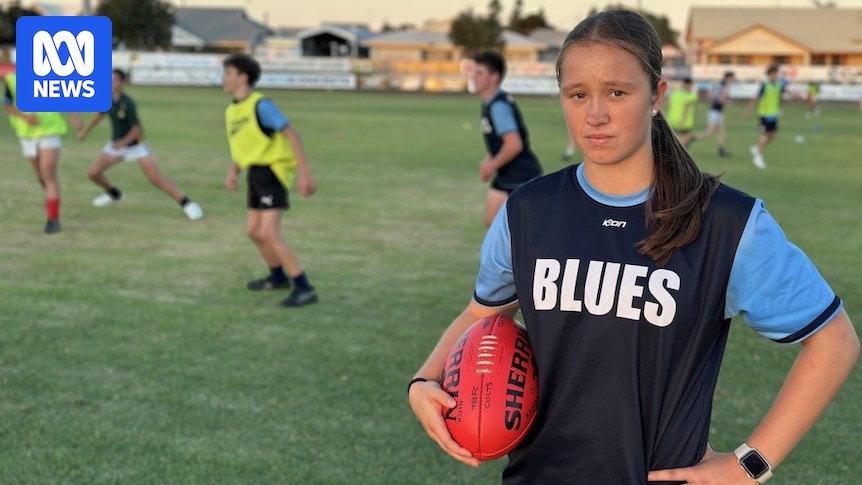
In a move that has sparked widespread outrage, one of Australia’s top female under-16 footballers, Lani Cocks, has been barred from continuing to play in a boys’ Aussie rules competition on the Eyre Peninsula due to her gender. The decision, which aligns with official AFL and modified South Australian rules, was communicated to Lani, the vice-captain of the Tumby Bay Under 16s, following her standout performance last Saturday.
Lani, who has been playing in the boys’ league since she was seven, recently earned the Most Valued Player (MVP) title at the All-Australian Championships. Despite her achievements, the ruling means she and other girls aged 14 and 15 can no longer participate in the boys’ competition. This decision has left many country football clubs across the Eyre Peninsula frustrated, as they claim the South Australian National Football League’s (SANFL) policy was not communicated before the season began.
Backlash from Local Clubs and Players
The announcement has not only affected Lani but also several other female players who were informed mid-match or after the first game of the season. The girls had already paid to play for the entire season, making the ruling a bitter disappointment for those who hoped to finish the year with their male teammates.
Robert Shirley, a former AFL Crows player and current coach of the Cummins Ramblers Under 16s, expressed his dismay at the decision. “Girls were able to register and pay without a problem up until round one, so why didn’t the SANFL pick up on anything about it happening until now?” he questioned. Shirley’s team is now two players short, including his daughter, Annabelle, who was also barred from playing.
Scientific and Safety Concerns
The SANFL has defended its decision, citing player safety and insurance reasons as the primary motivations behind the policy. Richard Murphy, SANFL community operations manager, explained that the rules are derived from AFL guidelines, which restrict girls over 14 from playing in boys’ competitions unless there is no reasonable access to a girls’ or women’s league.
However, the scientific basis for this policy has been challenged. Dr. Michael O’Shea, a senior lecturer at Western Sydney University, questioned the rationale behind excluding 15-year-old girls while allowing younger girls to play. “Just because a boy is 16 doesn’t mean that his skill level is as good or better,” he noted, emphasizing that age and gender should not be the sole considerations.
Opportunities and Future Implications
Despite the controversy, SANFL manager Matt Duldig highlighted the availability of a thriving Port Lincoln Women’s Football League, which offers senior and under-age competitions. He stated that exemptions are considered on a case-by-case basis, factoring in the availability of girls’ competitions, the player’s age, skill level, and physical capability.
While the SANFL maintains that the policy is in place to protect players, the decision has prompted calls for a reevaluation of how gender and age are factored into sports participation. The debate underscores a broader conversation about gender equity in sports, with potential implications for future policy adjustments.
As the situation unfolds, the affected players and their supporters continue to voice their dissatisfaction, hoping for a resolution that allows talented female athletes like Lani Cocks to pursue their passion for Aussie rules football without unnecessary barriers.






